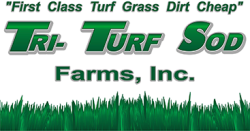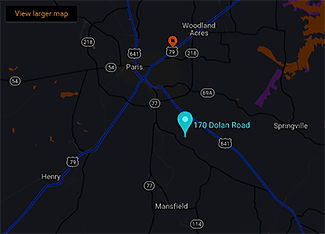Proper watering techniques are a critical aspect of lawn watering, equal in importance to the issues of when to water and how much to water. Here are several key factors to proper technique:
Avoid hand sprinkling because it cannot provide the necessary uniformity as most people do not have the patience, time or “eye” to adequately measure what is being applied across any larger areas of lawn. The only possible exception to this guideline would be the need to syringe the surface of the grass to cool it, or to provide additional water near buildings or other heat-reflecting surfaces.
Understand the advantages of different sprinkler designs, because each type has its advantages and disadvantages and its proper use will be determined by the type of sprinkler you select.
In-Ground Systems require professional design and installation and they require routine adjustments and regular maintenance to be most effective and efficient. The greatest mistake made with most in-ground systems is the “set it and forget it” philosophy that fails to account for the changing seasonal water requirements to maximize turf grown or even allowing the system to operate during or following a multi-inch rain storm. Another frequent problem is when heads get out of alignment and apply water to the sidewalk, street or house-siding, rather than to the lawn.
Hose-End Sprinklers range in complexity, cost and durability, but are highly portable and can provide uniform and consistent coverage, when properly placed on the yard and adequately maintained.
Sprinklers that do not throw the water high into the air are usually more efficient because prevailing winds are less disruptive of distribution patterns, the potential for evaporation loss is reduced and trees, shrubs and other plants do not block the pattern (or are very noticeable if they do).
Several times during the growing/watering season, routine maintenance to check for blocked outlets, leaking or missing gaskets, or mis-aligned sprinkler heads is important, regardless of the sprinkler design.
Select sprinklers and systems for uniformity of coverage across whatever area they are designed to water. Inexpensive hose-end sprinklers and in-ground irrigation systems can provide uniform coverage, but they can also be extremely variable and inconsistent in their coverage patterns.
Verify watering uniformity can be accomplished with a very simple and inexpensive method that uses only 4 to 6 flat-bottomed, straight-sided cans (tuna fish, cat food, etc.), a ruler and a watch.
Follow these steps:
Step #1: arrange the cans at random distances away from any sprinkler, but all within the area you assume is being covered;
Step #2: run the sprinkler for a specific amount of time, say a half-hour OR run the water until a specific amount of water is in at least one can, say a 1.5 cm (0.5 inches)
Step #3: measure the amount of water in each can, checking for uniformity. Some variation is expected, but a difference of 10-percent or more between any two cans must be addressed by replacing or adjusting the sprinkler or relocating the system.
This measuring method should be used across an entire lawn that has an in-ground irrigation system to assure maximum coverage and uniformity.
Watering difficult areas such as slopes and under trees requires some special attention to achieve maximum benefit and a beautiful lawn.
For Slopes, see Watering Tip #3
For Areas Under and Near Trees you need to know the water requirements for the specific trees, as well as for the grass. Despite having deep “anchor” roots, trees take up moisture and nutrients from the top six inches of soil…the same area as the grass. Trees and turf will compete for water. Watering sufficiently for the grass may over-water some varieties of trees and under-water others. A common solution is to not plant grass under the drip-line of trees, but rather use that area for perennial ground-covers, flower beds or mulch beds.
HOW MUCH Water Is Applied & Needed
The amount of water your lawn requires and receives will determine its overall health, beauty and ability to withstand use and drought. Keep in mind that too much water can ruin a lawn just as fast as too little.
One inch a week is the standard water requirement established for most lawns; however, this will vary between different turf species and even among cultivars within a specie. There will also be varying water requirements for seasonal changes and still more differences brought about because of different soil types.
Look at your lawn to determine its water needs. Grass in need of water will have a grey-blue cast to it, rather than a blue-green or green color. Also, foot prints will still appear after a half-hour or more on a lawn in need of water, while on a well watered lawn foot-prints will completely disappear within minutes.
Use a soil probe, such as a screwdriver or large spike to determine how dry your lawn is. If the probe can be pushed into the soil easily, it’s probably still moist, but if it takes a lot of pressure to push in, it’s time to water.
Verify watering quantities with the same measuring can method described above, except you will want to note the time it takes for the cans to collect a specific amount of water. For example, if 0.5 cm (0.25-inches) collects in 30 minutes, you can easily calculate that it will take one hour to apply 1 cm (0.5-inches) of water or two hours to apply 2.5 cm (1-inch).
Water timers can help provide consistency and even be programmed or set to turn-off when no one is awake or at home. Some timers measure just the amount of time water is flowing through the devise and you have to know or calculate how long to set the timer for (see item above). Other units measure the number of gallons of water flowing through it. Knowing that 600 gallons per 1,000 square feet equals one-inch of water will help you calculate the timer settings your lawn will require.


